I love sauces. I love spreads. I love anything that is packed with flavor and when smothered on anything else, makes it 100x better.
Enter my dear friend Pesto.
The pesto that most are familiar with is made with basil, but you can make pesto with whatever green suits your fancy (even kale!). I bought some baby arugula this week and when the weather got cooler and I wasn’t in the mood for salads anymore, pesto came to my rescue!
Oh, and for those of you who “hate” greens, pesto is a fabulous way to incorporate them into your diet, especially because the greens are RAW and therefore remain bursting with vitamins and enzymes (read: happy body, clear skin, good digestion). Arugula is rich in vitamins C, K and B-complex, beta carotene, and a variety of antioxidants including DIM, which has important benefits in regulating detoxification and normalizing female hormones. When eaten raw, and particularly when combined with a fat source (here the nuts, Parmesan, and olive oil), these nutrients are optimally absorbed.
Raw Arugula Pesto
- 4+ cups arugula, packed (5-6 ounces, or one typical bag from Earthbound Farms or elsewhere)
- 1-2 garlic cloves, peeled
- 1/4 cup pine nuts or walnuts (or 50/50 mix of the two)
- 1/4 cup raw, grated Parmesan cheese (TJ’s sells a great one)
- 1/4 cup extra virgin olive oil
- squeeze of lemon juice
- pinch of salt
Directions
- In the bowl of a food processor, pulse greens, garlic cloves, nuts, and Parmesan. (I had to process the greens in stages, because all 4 cups wouldn’t fit at first. It will depend on your food processor.)
- With the food processor running, slowly pour olive oil through the feed tube. Add lemon juice and salt to taste. Process to combine.
- Transfer to a glass container, like a mason jar. If there is air space in the jar, press a piece of wax paper to the top of the pesto to prevent oxidation (aka browning).
- Store in the refrigerator for up to 2 days or freeze in ice cube trays for later use.
How I use pesto
If you follow my blog, facebook, or twitter, you know what I’m not a proponent of high carb diets. Therefore, pasta is not my vehicle of choice for enjoying this green glory. Instead, try any of the following:
- Spread on chicken, beef, lamb, or fish – either as a marinade or finishing touch
- Mix into sour cream or creme fraiche for a tasty dip for vegetables
- Combine with spaghetti squash for a grain-free, lower carb pasta substitute
- Use as a base for salad dressing. Just add additional olive oil and lemon juice or vinegar to 1-2 Tbsp of pesto
- Put a dollop on homemade soup to add a fresh bite
- Garnish cooked vegetables or a raw grated vegetable salad
- Layer pesto, thinly sliced tomatoes, zucchini, eggplant, and cheese for a noodle-less lasagna-inspired vegetable bake
- And of course, you can use pesto on real pasta, garlic bread, bruschetta, sandwiches, and as a pizza sauce
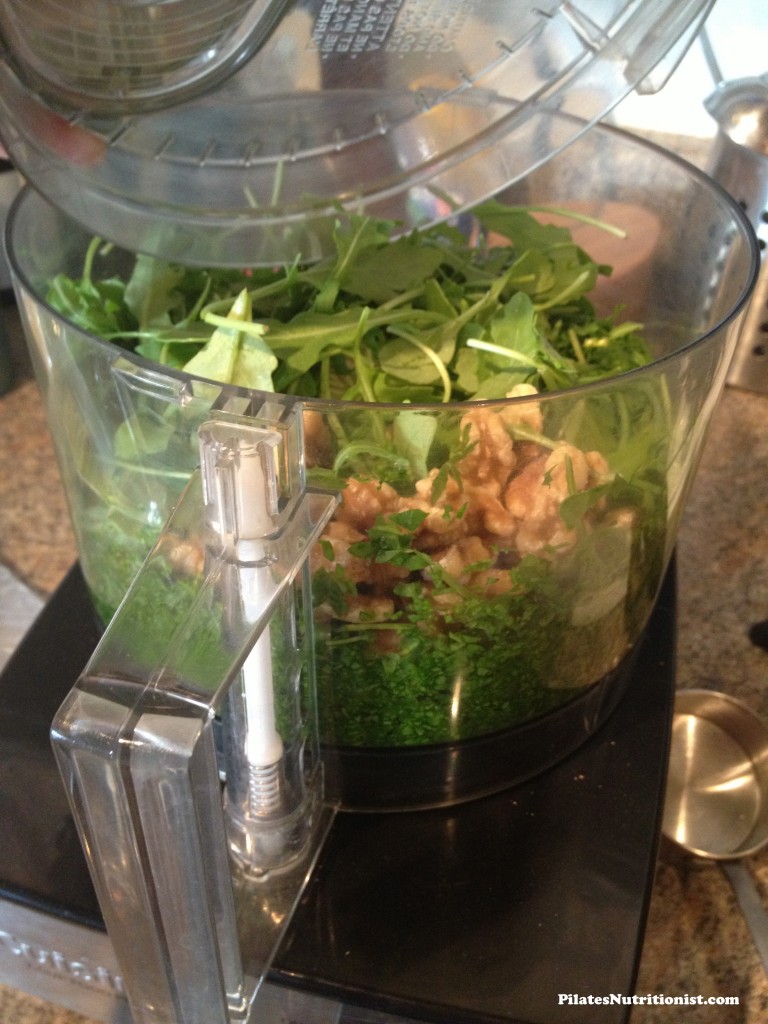
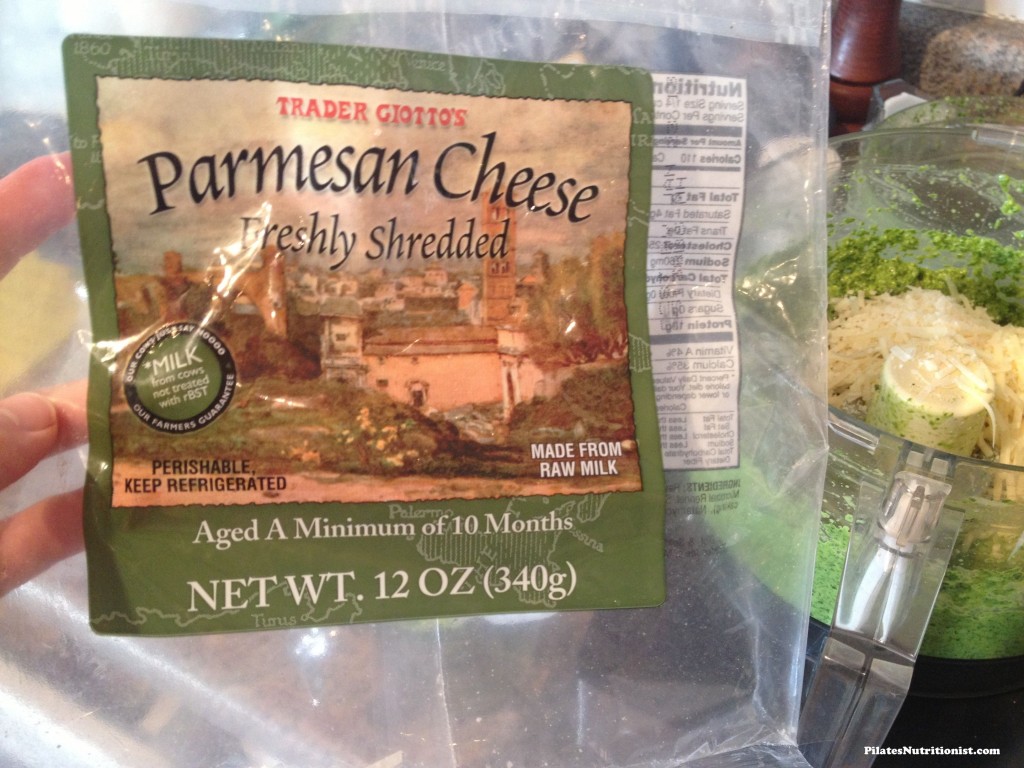
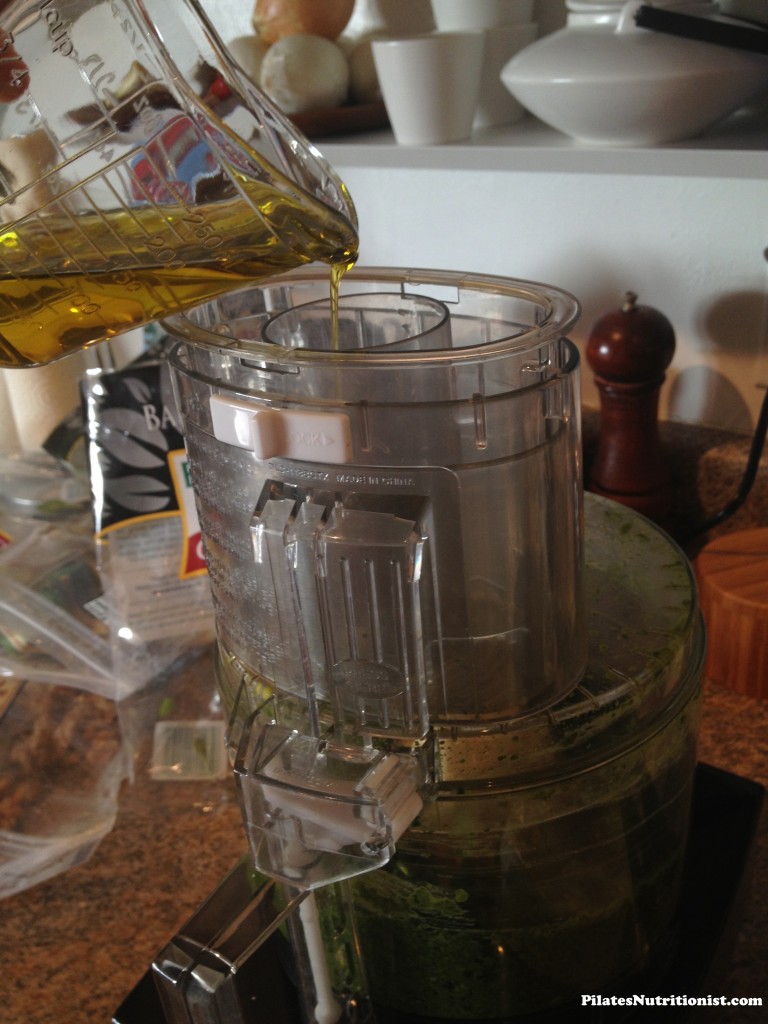
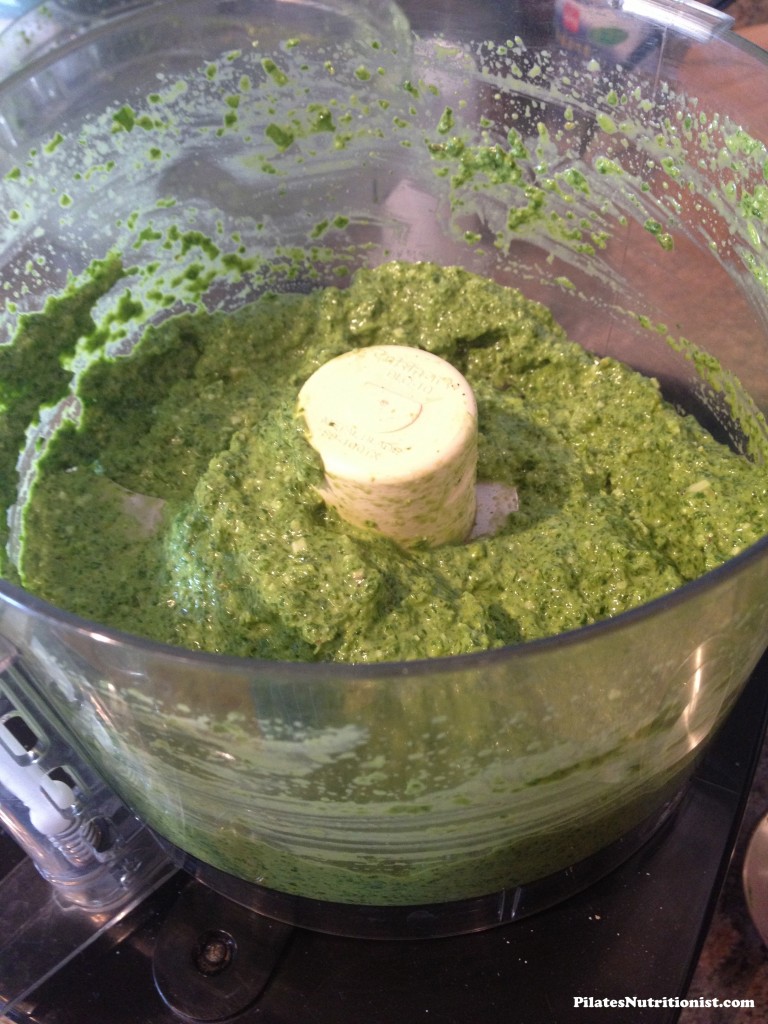
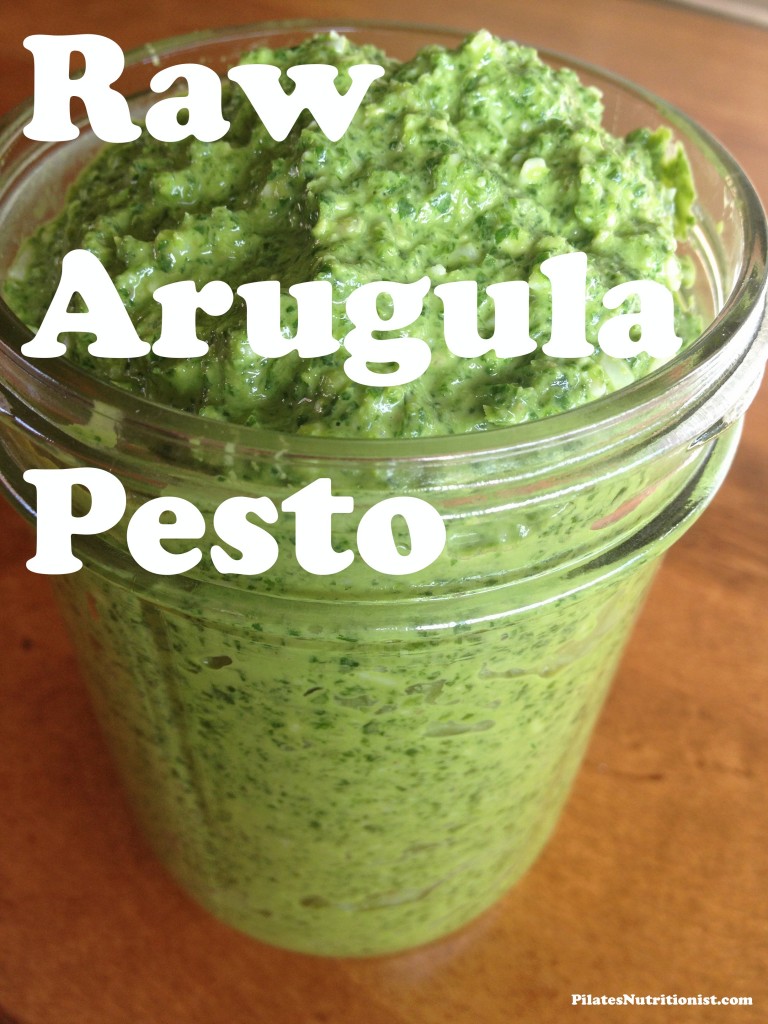











Looks real good and easy enough for anyone to make, nice post. Do you think it will keep for more then 2 days in the fridge? Ive seen pesto sauces in the supermarkets made with real ingredients and no preservatives or additives and they sit there for a while, so i am just wondering. I guess you’d want to consume it while its freshest though to get the max benefits of the vegetables.. but any way I like the ideas of how to use this with out pasta, lots of good ideas! I dont know how I stumbled upon you on twitter but its been a wonderful find.. looking forward to your next update. – Matt
For longer storage in the fridge, you can cover the pesto with a layer of olive oil to keep it airtight. That should preserve it for at least a week and potentially much longer. But yes, the longer it sits, the more chance bacteria/mold grow and nutrients diminish. I would just check the smell and be sure there’s no mold and most likely it would be safe to eat. Freezing ice cube trays is just so much more convenient for me when I make a big batch.
I’m glad you’re enjoying following my blog!